You don’t need to spend thousands on premium glass to capture stunning cosmic images. Third-party lenses have evolved dramatically, offering impressive optical quality at prices that won’t empty your bank account. While Canon and Nikon command premium prices, manufacturers like JINTU and SVBONY have quietly developed alternatives that deliver comparable results for astrophotography enthusiasts. Ready to discover how these budget-friendly options can help you photograph celestial wonders without the astronomical price tag? The answer might surprise you.
JINTU 420-1600mm f/8.3 Telephoto Zoom Lens for Canon SLR Cameras
Aspiring astrophotographers on a budget will find the JINTU 420-1600mm telephoto zoom lens an accessible entry point into celestial photography. This manual focus lens offers impressive reach for capturing lunar details and larger planets like Jupiter and Saturn.
You’ll appreciate the full metal construction and multi-coated glass elements that deliver surprisingly good image quality for the price. While you’ll need a very stable tripod to counter the inevitable camera shake at these focal lengths, patience during setup pays off.
Don’t expect premium brand performance, but at under $200, it’s an affordable way to experiment with deep sky photography before investing in more expensive optics.
Best For: Budget-conscious beginners interested in lunar and planetary photography who are willing to learn manual focusing techniques and have patience for the technical challenges of telephoto shooting.
Pros:
- Impressive zoom range (420-1600mm with teleconverter) at an affordable price point under $200
- Full metal construction with multi-coated glass elements provides decent image quality for the cost
- Compatible with various Canon EOS DSLR cameras, making it accessible to many Canon users
Cons:
- Manual focus only, requiring significant practice and patience, especially challenging for beginners
- Image quality deteriorates at extreme focal lengths, particularly when using the 2X teleconverter
- Requires extremely stable tripod setup, as even minor vibrations can ruin shots at maximum zoom
SVBONY SV555 Astrophotography Telescope, 54mm APO Refractor
The SVBONY SV555 telescope stands out as a versatile solution for astrophotographers seeking precision without breaking the bank. With its adjustable aperture from F4.5 to F22, you’ll enjoy remarkable flexibility for different celestial subjects.
The telescope’s 3-group 5-piece petzval design with triplet lens delivers pin-point stars with minimal aberration across full-frame sensors. You’ll appreciate thoughtful features like the anti-fingerprint finish, graded aperture ring, and dual-compatible quick-release system.
While some users report focus challenges without filters, the precision focus mechanism with 2.67-3.22mm travel solves common back focal distance issues, making this 8.36-pound APO refractor an impressive value proposition.
Best For: Dedicated astrophotographers seeking a portable, high-quality APO refractor telescope with flexible aperture settings for capturing detailed celestial images.
Pros:
- Versatile aperture range (F4.5 to F22) with graded adjustment ring provides excellent flexibility for different astrophotography subjects
- Precision focus mechanism with 2.67-3.22mm travel effectively solves back focal distance issues common in astrophotography
- Thoughtful design features including anti-fingerprint surface, V-style & Arca-Swiss compatible quick-release system, and triplet lens for minimal aberration
Cons:
- Some users report difficulty achieving perfect focus without additional filters
- Primarily designed for astrophotography and may not reach visual focus without extensions
- At 8.36 pounds, while lighter than previous models, it’s still relatively heavy for extended portable use
JINTU 500-1000mm Manual Telephoto Lens for Canon EOS Cameras
Budget astrophotographers seeking extreme magnification will find the JINTU 500-1000mm Manual Telephoto Lens an intriguing option for Canon EOS camera systems. This fully manual lens offers impressive reach at a fraction of premium telephoto prices.
You’ll need to master manual focusing and switch to M MODE, as the lens lacks electronic contacts. For best results in astrophotography, mount it on a sturdy tripod to combat the inevitable camera shake at these focal lengths.
While it won’t match premium glass optically, the high-index, low-dispersion elements deliver respectable clarity for moon shots and larger celestial objects when properly configured.
Best For: Budget-conscious amateur photographers and astronomy enthusiasts seeking extreme zoom capabilities for wildlife, sports, or celestial photography without investing in premium telephoto lenses.
Pros:
- Impressive focal range of 500-1000mm (with 2X Teleconverter) provides exceptional reach for distant subjects like wildlife and celestial objects
- Extremely affordable entry point into super-telephoto photography compared to professional Canon lenses
- Compatible with a wide range of Canon EOS camera models, from entry-level Rebel series to professional 5D models
Cons:
- Fully manual operation requires technical knowledge and practice, with no autofocus or image stabilization
- Requires a sturdy tripod for sharp images due to magnification level and lack of stabilization
- Image quality isn’t comparable to premium lenses, with some users reporting issues with clarity and black images when improperly configured
JINTU 420-800mm Manual Telephoto Zoom Lens for Canon EOS Cameras
Moon gazers and wildlife enthusiasts seeking affordable telephoto reach will find the JINTU 420-800mm f/8.3 Manual Telephoto Zoom Lens an intriguing option for Canon EOS cameras. This solidly built metal lens weighs just 1.8 pounds, making it surprisingly portable for its impressive zoom range.
You’ll appreciate the multi-coated low-dispersion glass that delivers ultra HD image quality, particularly when photographing distant subjects like the moon and wildlife. While it’s manual focus only, patient photographers report excellent results once they’ve mastered the focusing technique.
At 4.2/5 stars from 650 ratings, it’s ranked #40 in SLR Camera Lenses—offering tremendous value despite occasional chromatic aberration issues.
Best For: Budget-conscious photography enthusiasts willing to learn manual techniques who want extreme telephoto reach for moon, wildlife, and sports photography.
Pros:
- Impressive 420-800mm zoom range in a lightweight (1.8 lbs), portable metal construction
- Excellent value for price with good image quality when properly used with a tripod
- Compatible with numerous Canon EOS models and adaptable to other brands
Cons:
- Manual focus only, making it challenging for beginners and requiring practice to master
- Some users report issues with chromatic aberration that requires post-processing correction
- Tripod mount may be prone to breakage under heavy use conditions
JINTU 420-800mm f/8.3 Manual Telephoto Lens for Canon EF Mount
For astronomy enthusiasts seeking an affordable entry into lunar and planetary photography, JINTU’s 420-800mm f/8.3 Manual Telephoto Lens offers impressive reach without breaking the bank.
The all-metal construction and multi-coated glass deliver surprisingly decent image quality at its price point. You’ll need a sturdy tripod as there’s no image stabilization, and the fixed f/8.3 aperture demands good lighting conditions.
While you won’t capture fast-moving celestial events effectively, this lens excels at moon photography. Be prepared for a learning curve with manual focusing, but many users find the effort worthwhile given the dramatic zoom capability at such an accessible price.
Best For: Amateur astronomers and budget-conscious photographers looking to capture detailed shots of the moon, distant wildlife, or stationary objects without investing in expensive telephoto equipment.
Pros:
- Impressive 420-800mm zoom range provides exceptional reach for celestial photography, especially moon shots
- Durable all-metal construction with multi-coated glass elements delivers surprisingly decent image quality for its price point
- Affordable entry-level option for photographers wanting to explore super-telephoto photography without a major investment
Cons:
- Manual focus only with no image stabilization, requiring a sturdy tripod and patience to achieve sharp images
- Fixed f/8.3 aperture limits low-light performance and requires good lighting conditions for optimal results
- Learning curve can be steep for beginners, with some users reporting difficulties with focusing and mounting stability
Factors to Consider When Choosing Third-Party Lenses for Astrophotography That Cost Half as Much as Name Brands
When selecting budget-friendly third-party lenses for astrophotography, you’ll need to evaluate several critical factors that determine performance in night sky imaging. Despite their lower price points, quality third-party options can deliver impressive results if you prioritize optical clarity, manual focusing precision, appropriate aperture size, and sturdy tripod mounting capabilities. These considerations will help you find affordable alternatives that perform admirably for capturing celestial objects without emptying your wallet.
6 Subheading Discussion Points
Why should you spend thousands on premium lenses when third-party alternatives might deliver comparable results at half the price? Before making your decision, carefully evaluate several critical factors.
First, assess image quality—examine how the lens handles chromatic aberration and sharpness, as budget options can vary considerably in optical performance. Don’t overlook build quality; cheaper models might be more susceptible to misalignment, potentially compromising your astrophotography sessions.
Most third-party options feature manual focus, which is actually ideal for astrophotography. Make sure you’re comfortable making precise adjustments in low-light conditions. Verify compatibility with your camera system before purchasing, noting whether adapters are required.
Finally, research user reviews specifically mentioning astrophotography applications. Real-world experiences from fellow night sky photographers will provide invaluable insights into how these budget-friendly alternatives perform under starlight.
Optical Quality Matters
Optical excellence stands as the cornerstone of effective astrophotography, regardless of price point. When selecting third-party lenses, prioritize those with multi-coated low-dispersion glass elements that enhance image clarity and contrast—vital features for capturing faint stars and nebulae details that might otherwise remain invisible.
Look for lenses that minimize aberrations, ensuring sharp images of celestial objects even at extreme focal lengths. A fixed aperture (like f/8.3) provides consistent exposure across different magnifications, simplifying your nighttime shooting workflow.
Don’t overlook construction quality; a full metal body contributes to durability and stability during long exposure sessions. Many budget-friendly astrophotography lenses feature manual focus design, giving you precise control that’s essential when focusing on distant celestial bodies—a small trade-off for significant cost savings.
Manual Focus Capabilities
Although autofocus systems continue to advance, manual focus remains the gold standard for serious astrophotography, particularly with budget-friendly third-party lenses. When capturing distant celestial objects, the precision of manual adjustments allows you to achieve the sharpness that autofocus often misses.
Many third-party options like JINTU lenses embrace this manual-focus philosophy, encouraging you to develop your technical skills while capturing the cosmos. Since these lenses typically lack electronic contacts, you’ll need to switch your camera to manual mode for proper operation.
Don’t view the learning curve as a disadvantage—mastering manual focus gives you greater creative control, especially when experimenting with stacking techniques and long exposures. Your efforts will be rewarded with crisp images of faint stars and deep-sky objects that automated systems struggle to capture.
Aperture Size Considerations
The aperture of your lens represents the single most critical factor in astrophotography success, especially when maneuvering budget options. When selecting third-party lenses, prioritize those with the widest apertures (smallest f-number) your budget allows—this directly impacts your ability to capture faint celestial objects.
While premium brands often boast impressive f/2.8 or wider apertures, many third-party manufacturers offer respectable f/4 or f/4.5 alternatives that perform admirably at half the cost. Be wary of fixed-aperture budget lenses (like f/8.3), as they’ll severely limit your flexibility during night shoots.
If you’re considering a lens with a smaller maximum aperture, look for models featuring multi-coated low-dispersion glass elements. These enhancements greatly improve light transmission and reduce chromatic aberration, compensating somewhat for aperture limitations when shooting the night sky.
Tripod Compatibility Requirements
When selecting budget-friendly third-party lenses for astrophotography, you’ll need to carefully consider tripod compatibility factors that many photographers overlook. Check that your chosen lens has a standard mounting system, as cheaper options often feature proprietary designs that won’t fit your existing equipment.
For lenses with focal lengths of 800mm or beyond, you’ll require a particularly sturdy tripod to eliminate vibrations during long exposures. Weight is another important factor—heavier lenses demand tripods with higher weight capacities to prevent potentially costly accidents.
Look for adjustable tripods with robust legs to capture celestial objects from various angles. Additionally, verify whether your prospective lens supports tripod collars, which greatly improve balance and handling, especially when shooting upward toward the night sky.
Weight Vs Portability
Finding the perfect balance between weight and portability presents one of the biggest challenges when selecting third-party astrophotography lenses. When you’re trekking to remote dark sky locations, every ounce matters. Lenses under 3 pounds will spare you fatigue during extended shooting sessions and make frequent adjustments less cumbersome.
However, don’t sacrifice stability for lightness. Extremely lightweight options may introduce vibration issues during long exposures, resulting in blurry images. Consider that heavier lenses often require sturdier tripods, adding to your overall gear weight.
The good news? Many third-party manufacturers now use advanced materials that maintain optical quality while reducing weight. These engineering innovations allow you to enjoy premium-level durability and performance without the back-breaking heft of some name-brand alternatives.
Frequently Asked Questions
How Long Will Third-Party Lenses Typically Last Compared to Premium Brands?
Well-made third-party lenses can last just as long as premium brands—often 10+ years with proper care. You’ll find their durability depends more on build quality and how you treat them than brand name.
Can Third-Party Lenses Damage My Camera Body?
No, reputable third-party lenses won’t damage your camera body. They’re designed to meet compatibility standards. However, you should always buy from established manufacturers and avoid extremely cheap, unknown brands for complete peace of mind.
Are Warranties Comparable Between Third-Party and Premium Brand Lenses?
Third-party warranties typically last 1-3 years compared to premium brands’ 3-5 years. You’ll get less extensive coverage and fewer service centers, but you’re still protected against manufacturing defects in your lens.
Do Third-Party Lenses Retain Resale Value Well?
Third-party lenses generally don’t retain resale value as well as premium brands. You’ll typically see steeper depreciation compared to Canon or Nikon lenses, but they’re still a better value proposition initially.
Will Using Third-Party Lenses Void My Camera’s Manufacturer Warranty?
Using third-party lenses won’t void your camera’s warranty. Manufacturers can’t deny warranty claims simply because you’ve attached non-brand lenses. However, if a third-party lens damages your camera, that specific damage likely won’t be covered.
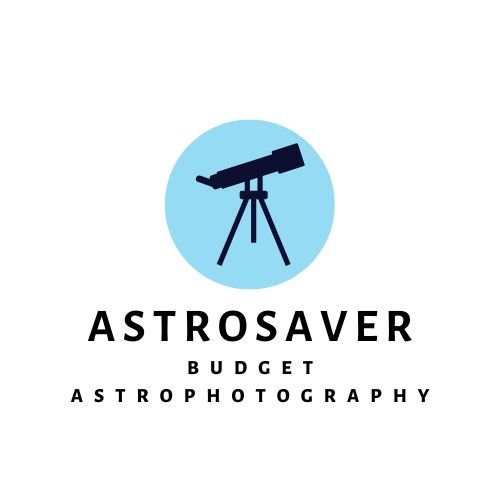
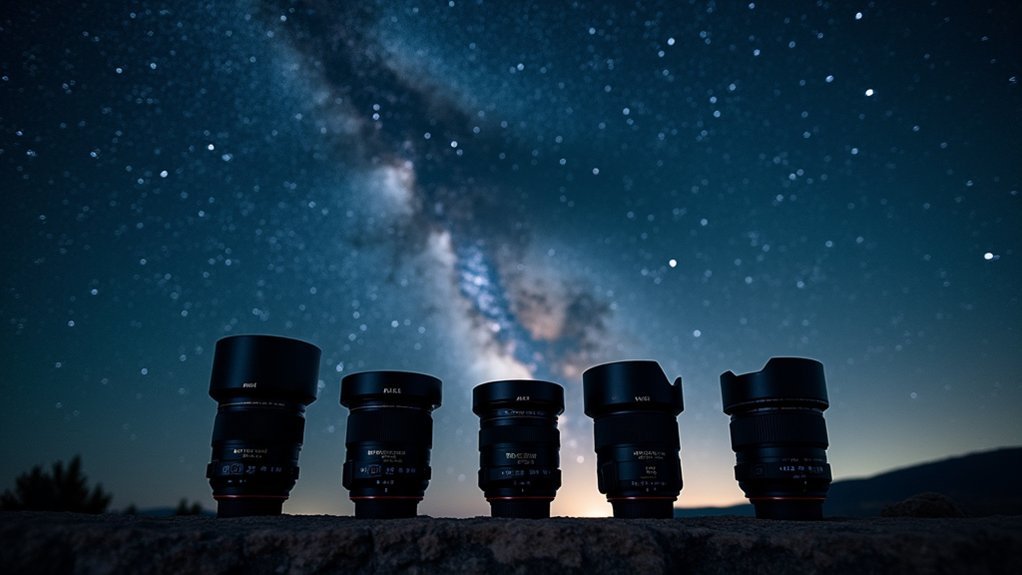
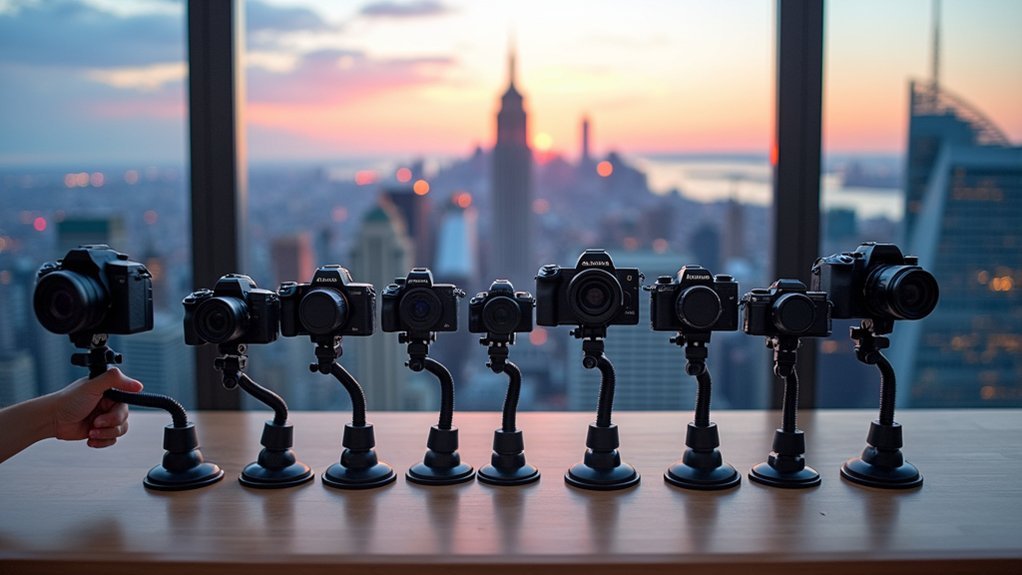
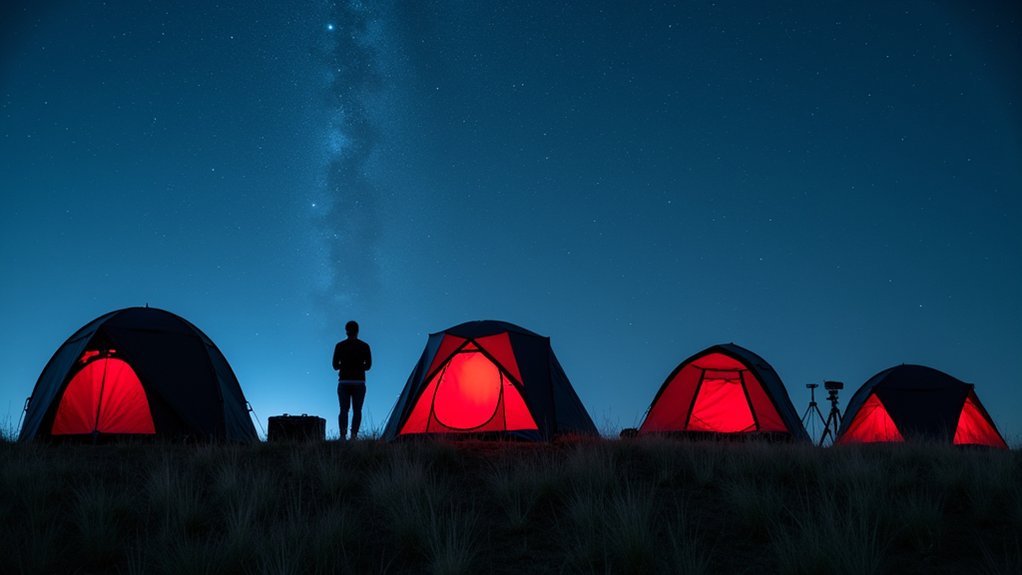
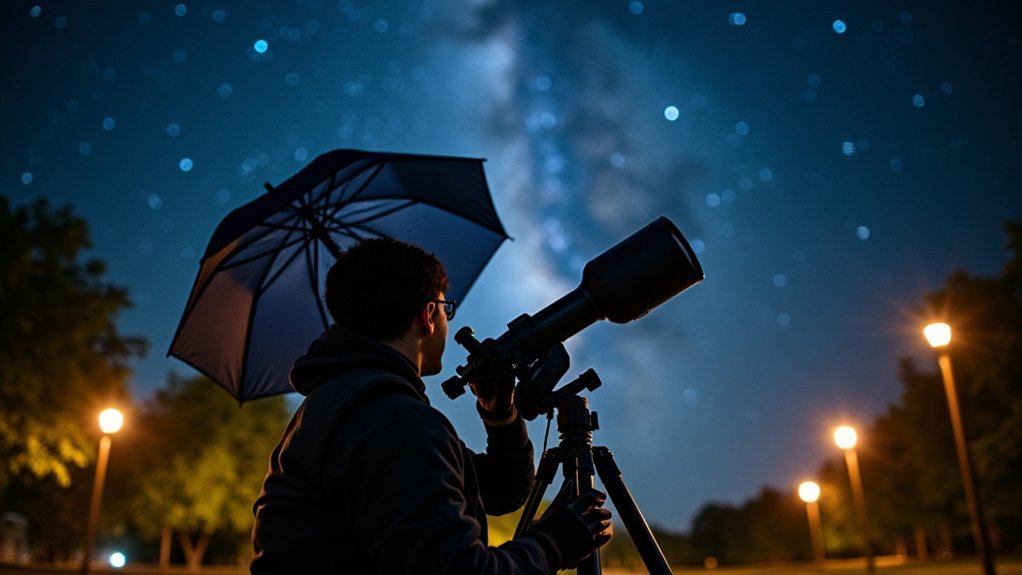
Leave a Reply